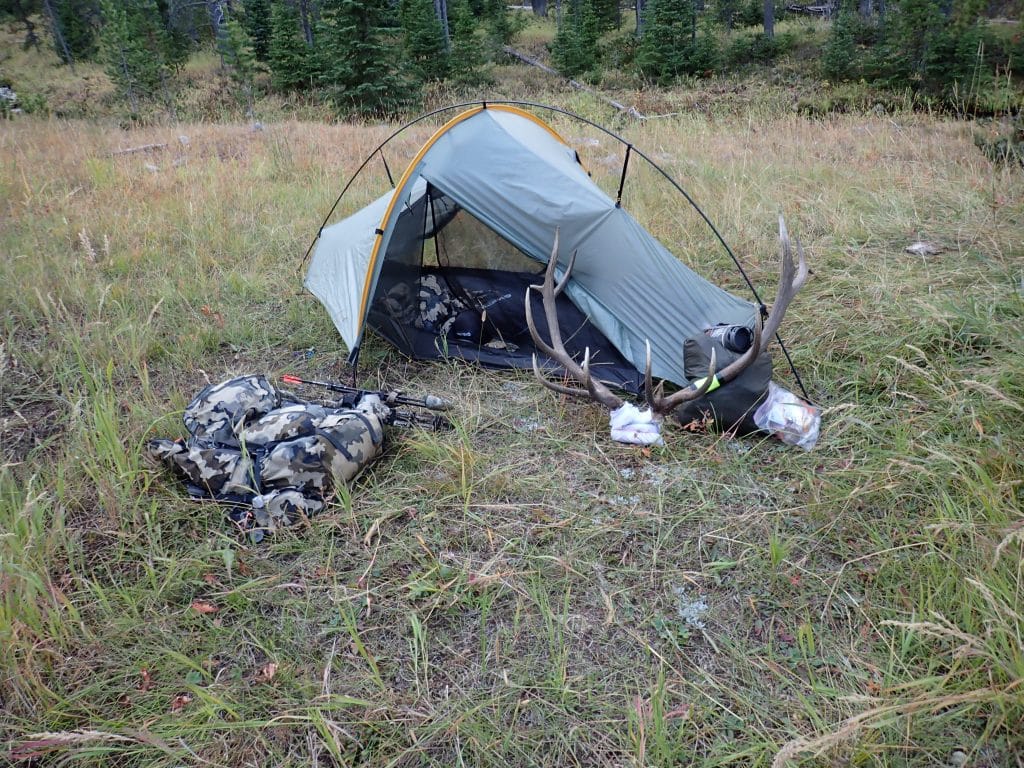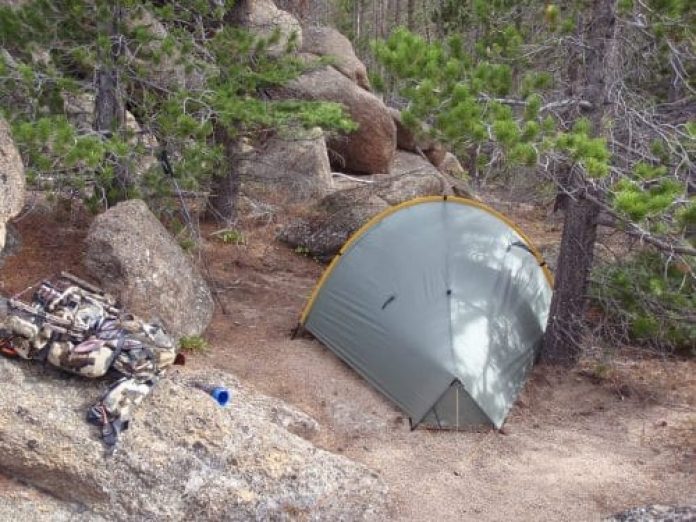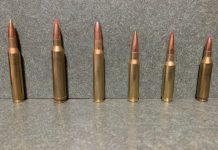Written by: Tony Trietch
After nearly six weeks scouting and hunting in two different states, my truck was pointed back to the place I call home. The thought of sleeping in my bed and in my house brought a smile to my face. But my smile was subdued since heading home meant my hunt was over. Spending many consecutive nights in a tent made me analyze small details of my shelter that I ordinarily looked past. Aspects of your home away from home that did not seem important in planning become paramount to a restful night. Conversely, features that you sought out and thought you really needed often become irrelevant. Obviously, a shelter must keep us protected from the elements. It can also provide a place to recoup after a long, hard day. Below I will outline some of the different tent styles for choosing quality shelters for your specific needs.
What’s Your Hunting Style?
The west saw many different weather patterns this fall. Heavy wet snow and fog make condensation inside the shelter an issue. Hail and relentless wind that felt as though it would leave my tent in pieces kept me up more than one night. Many times I found myself in weather that made me question not only my tent choice but my sanity. Maybe a larger four-season shelter can save sleepless nights but you still have to haul it around. A hunter’s choice of shelter is important and can be the difference in a notched tag or tag soup. For example, it is important to consider what weather you may encounter, but also your hunting style, as well as the level of comfort and space you personally require to be at ease while you rest. Are you backpacking and hunting solo, or are you hunting with a partner on horseback? Sometimes the terrain we hunt or the time of the year we are hunting can have a huge impact on that decision. If you can’t get good rest, you will not hunt effectively. There are compromises in every decision we make when choosing our gear. Your shelter is no different.
Ultra Lightweight Shelters
There is a different style of shelter for just about every hunter. For those that are okay with tight quarters and are looking for the lightest shelter they can find, UL bivys, floorless tarps, and UL 3 season tents will pack small and carry light. This is often where the solo hunters without stock end up, trying to keep the pack as light as possible. Some of them are pretty capable of toughing out a storm too. If you like to have a bit more space or just need to be able to handle harsh conditions, then 4 season tents, tipis, and heated wall tents may be a good choice. The weight can be offset if you are hunting with a partner and can split the load. Each consideration comes with a tradeoff, whether it’s weight, durability, or space. Finding the one that fits you might take some trial and error.

Heavy Duty Shelters
At the other end of the spectrum are the larger more spacious shelters that are typically used with stoves. Wall tents are most often used when packing is NOT done with a backpack. If you have horses, llamas, or goats to carry the load, they can be a game changer. Tipis offer many of the same benefits of a wall tent. They are much lighter than wall tents but offer no sidewalls, Headroom is also limited to the center area. The ability to dry out your gear and warm the body can go a long way toward keeping you hunting and not headed back to the trailhead soaked and chilled to the bone. Mobile hunters can use tipis if packing duties are shared, as they are much lighter than wall tents. As a backpack hunter that is typically solo, I have only had a few opportunities to hunt from a wall tent. Let me tell you when you are 12 miles in and get to sleep on a comfy cot next to a warm stove, it can make a man want to start using stock to haul in camp.
Mid-Range Shelters
The middle ground between the UL shelters and the wall tent/tipi comprises the majority of tents and fit most hunters’ needs. They are not super light, but not as heavy as a wall tent. Three and four-season tents that weigh over 2.5 to 3 pounds dominate the hunting tent world. Some are heavier because they are of lower quality, while others may be top of the line quality but are heavier due to being built to handle snow and wind. In this category, you can find tents from under $100 to well over $1000. While not ultra-light, they are as light as modern materials and designs can be while still ensuring storm ready durability. The ability to handle everything Mother Nature can throw at you comes at a price in weight and dollars! Many hunters across the west use these high-end tents on all their hunts. There is a certain peace of mind you get when you know your shelter can handle just about anything the weather can dish out. This is especially valid when you are hunting an area that has unpredictable weather.
Let Your Time Afield Decide
To ensure you are packing the option best for yourself you might need to experience some trial and error. You may need to try sleeping in a UL one man tent with a low ceiling and limited floor space to determine if that works for you or not, or maybe experiencing a larger wall tent or multi-person tent will fit your style of hunting. The more time you spend out there the more refined your sleeping gear will become. For some, it might be crystal clear, and for others, it may be a constant work in progress. Every year I take several different tents and tarps out in the off-season scouting to determine what works best for me. This year alone I used three different shelters, and I still waver on which I will use next time. Every hunting or scouting situation is unique and there may be several options that will work on any given day. You just need to spend time in your tent and figure out what fits you best.















